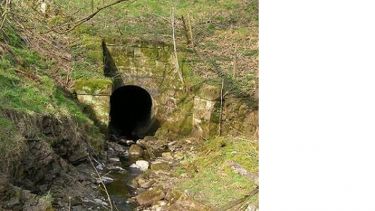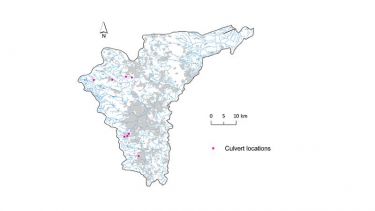Ecological impacts of culverts on benthic invertebrates: Habitat fragmentation and barriers to dispersal

Project background
Culverts can lead to considerable habitat fragmentation in rivers and streams. As a consequence, community composition of benthic invertebrates in culverts and dispersal movements through culverts may be altered. The aim of this research, conducted as a PhD project by a CatSci student Jacqueline Bernet , was to provide a better understanding of the ecological impacts of culverts both on dispersal and on community composition.
Key findings
- Culverts lead to changes in community composition over the length of the culvert because of the abrupt changes in light conditions and stream bed substrate.
- Culverts can either impede or facilitate upstream movement.
- Aerial dispersal by aquatic insects through culverts was reduced.
- The barrier effect of culverts does not have an effect on benthic communities either side of culverts.
- The ecological impacts of culverts on benthic invertebrates are therefore local, and the reduced movement through culverts appears to be sufficient to maintain densities in communities either side of culverts if no recent disturbance event extinguished populations.
Additional details
Site locations: For grid references of study sites, click here.
Funding: This project is part of the Marie Curie Early Stage Training programme ‘CatSci’, funded by the European Commission.
Publications
T.C. Wild, J.F. Bernet, E.L. Westling and D.N. Lerner. 2010. Deculverting: Reviewing the evidence on the 'daylighting' and restoration of culverted rivers. Water and Environment Journal.

